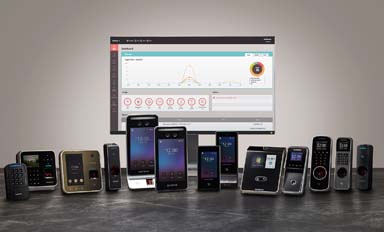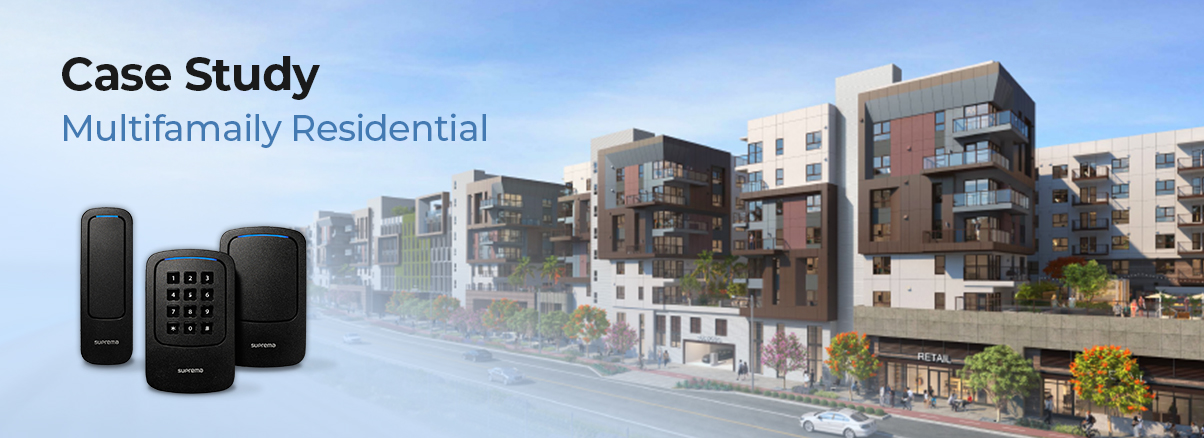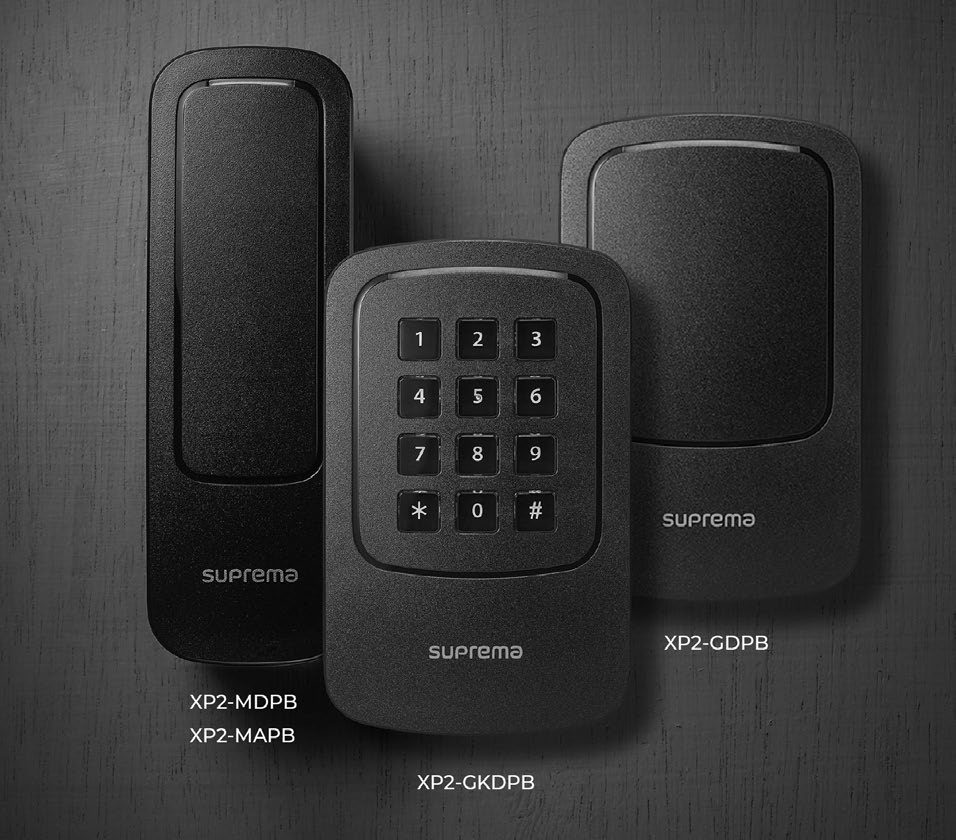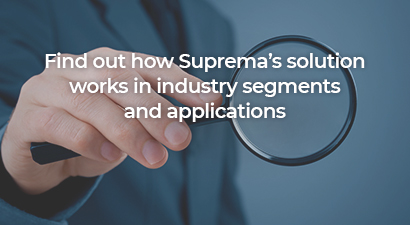- PRODUCTS
- PLATFORM
- BioStar 2 Access Control
- BioStar Air Access ControlNEW
- BioStar 2 Time and Attendance
- Suprema Mobile Access
- HARDWARE

- Biometric Readers
- RF/ Mobile Readers
- Intelligent Controller
- Peripherals
- OEM Biometric Modules
- Wireless Door Locks
-
Discontinued Products
- 4 Door Kit
- FaceLite
- BioStation A2
BioMini Plus 2
- BioStation 2
- OMNIS
X-Station 2(XS2-QAPB, XS2-QDPB)
- BioStation L2
- SOLUTIONS
- SUPPORT
- ABOUT
- device_hubHUB
- Blogs & Articles

[Intro Burbank is a multifamily property consisting of two eightstory residential buildings and a variety of luxury amenities. Photo: LaTerra Development]
Access control solutions for multifamily residential properties must address the needs of both residents and property managers. Residents prioritize convenience, security, and reliability, while property managers seek solutions that streamline operations, minimize administrative burdens, and offer scalability with cost efficiency..
Carlee Carpio has spent much of her career juggling these challenges as the driving force behind the development of over 30 iconic, design-forward luxury multifamily properties, including seven years spent as VP of Design and Development of LaTerra Development (she recently joined a new firm but continues to consult for LaTerra). The most recent is Intro Burbank – a 563-unit luxury apartment complex in Southern California.
To design and install Intro Burbank’s’ security infrastructure, she and TPS Technologies, a Las Vegas-based low-voltage integrator specializing in advanced security solutions for multifamily residences, relied on an access control best-practices template they have used throughout all LaTerra properties to meet the high demands of modern residential developments. At its center is Suprema’s flexible and scalable BioStar 2 system.
Project Overview: Intro Burbank
Intro Burbank consists of two eight-story residential buildings flanking a central eight-story parking garage. TPS Technologies was tasked with securing 116 access points to allow residents and authorized personnel to conve-niently enter the properties’ many high-end shared amenities while keeping unauthorized individuals out.
Suprema XPass readers – managed by the Suprema BioStar 2 platform – secure all exterior entryways, interior doors leading to community service and storage spaces, and the parking garage access gates. Jason Fuller, TPS Technologies President, explains, “Suprema’s solution offers the flexibility and affordability to cover a project of this size, where there are so many points to secure.” Plus, with the many credentialing technologies built into XPass, each property can use one fob for the amenity spaces and apartment locks. The same devices support RFID and mobile credentials. At Intro Burbank, the BioStar 2 system integrates with a receiver controlling the site’s parking area gate and a visitor telephone entry system at the main entrance. When residents are notified of a visitor, they use a third-party intercom app to see who’s there, speak with them, remotely unlock the Suprema-secured door, and authorize temporary elevator access.
Carpio stresses that since the rise of Door Dash and Uber Eats, access control integration with intercom systems is a must-have. Without it, residents become frustrated every time they have to walk to the main entrance to meet the driver. “We’re pleased that we’ve been able to implement these integrations without having to absorb any recurring monthly costs,” says Carpio. “That isn’t always the case with all systems, and over time, those monthly fees really add up.”
Ease of Use for Developers and Property Managers
Fuller says TPS’s clients need a solution they don’t have to relearn each time they have to program a resident into the system. “The quicker property managers can get a resident into their new home, the sooner they can move on to their next task,” says Fuller. Standardizing on a single solution for all of LaTerra’s properties was particularly helpful to Carpio because many of the LaTerra sites were under development at the same time. “I used to run around with so many different keys and fobs; it was just a nightmare,” she says. “Having that access through my phone was a huge convenience.”
TPS provided onsite training with staff at each property and recorded those sessions, breaking them into short clips on specific features. As a result, management companies found it quite easy to onboard new hires and deal with inevitable employee turnover.
Remote Management
Being able to manage the access control platform via a web browser is beneficial to the TPS support team and its clients. “Working with network and PoE-based readers is key for us,” stresses Fuller. “We can monitor the system’s health, update firmware, resetdevices, reconfigure settings, and much more.” Remote management capabilities offer several other advantages.
For example, most of LaTerra’s management companies have more than one LaTerra property in their portfolio. Remote management allows these organizations to share administrative resources across their sites. A manager responsible for more than one development can log into each site’s dashboard from wherever they work. And, as Carpio points out, “Smaller projects don’t need a property manager onsite all the time.” “We’ve also leveraged remote access to change how we allow prospective tenants to tour our buildings, thank to BioStar2’s support for Bluetooth credentials,”
she adds. “We text a code to a future tenant that allows them to temporarily enter the building during a designated time window, use the elevator, view the public areas, and see what their unit would look like. Logs show us exactly where they went and what they saw. It reduces our staffing overhead, plus it allows a greater volume of prospective tenants to tour our properties, increasing the likelihood that we can achieve full occupancy.””

[Intro Burbank standardized on Suprema XPass readers, managed by the Suprema BioStar 2 platform.]
Scalability and Flexibility
The Suprema readers and the BioStar2 platform encourage scalability by minimizing labor costs. “When installing a device, I can see each unit come online, [after which I can] name it, program it, and test the door using my phone or tablet. Installation is a breeze when you do it that way,” says Fuller. Suprema’s scalability also pertains to feature sets. “The biometric upgrade option is a huge benefit be-cause of the added layer of protection it provides.
Biometric credentials, like your face or fingerprint, can’t be lost or stolen, meaning they provide a much more secure solution,” Carpio says. “Given how criminals are getting smarter about how to bypass traditional technology, biometrics are going to make sense in a lot more applications.” In another example of future-proofing, Carpio and TPS strategized how to prepare for the possibility that multi-building developments using the Suprema solution might ultimately be split up and sold to different owners.
“When that actually happened, we had to adjust the access restrictions for residents so that they could only enter their respective buildings, but we were able to do it remotely, in seconds. The property managers were amazed at how seamless the transition was.”
Final Thoughts
Carpio says, “There’s a desire to be the first out in the market with a new solution. However, it’s more important to work with partners who are open-minded about the future and can anticipate how systems will need to adapt. And, you must select companies you trust, that will stay solvent, and will provide the response time and level of support you need throughout a very long process. It’s very disruptive if a technology partner goes out of business or is sold to new owners halfway through a project.” With Intro Burbank targeting Phase One completion for the summer of 2025, Carpio also stresses the need for an access control company to be committed to working with property management teams after the developer has moved on.
“We’ve been working with Suprema for over a decade, and any time I’ve needed them to get involved, whether from a technical or a sales standpoint, they’ve always been there to provide any assistance I’ve needed,” he says. With more LaTerra residential properties already in the works, and as TPS Technologies expands its footprint across the West Coast, “Suprema will remain a cornerstone of our access control strategy,” says Fuller.











